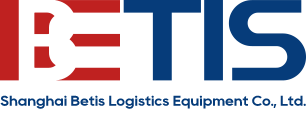Warehouse operations depend on efficient storage systems, and pallet racking is at the heart of this infrastructure. However, racks are also one of the most vulnerable assets in a warehouse. Daily forklift traffic, overloading, and improper installation can compromise rack integrity—posing serious risks to worker safety and inventory.
This is why regular warehouse rack inspections are not just a best practice but a compliance necessity. In this article, we’ll dive into why inspections matter, how often they should be performed, what standards apply, and how to build a long-term inspection program.
Why Warehouse Rack Inspections Matter
Worker Safety
Collapsed racking systems are among the most dangerous warehouse accidents, often resulting in severe injury or fatalities. Routine inspections identify early signs of damage before failure occurs.
Compliance with Regulations
Agencies like OSHA (Occupational Safety and Health Administration) don’t provide rack-specific codes, but they require employers to maintain safe workplaces. Following RMI (Rack Manufacturers Institute) and ANSI MH16.1 standards demonstrates compliance and due diligence.
Asset & Inventory Protection
A single rack failure can lead to massive product loss, damaged forklifts, and downtime. Inspections protect both your capital investment and supply chain flow.
Cost Prevention
Early detection of minor damage (like bent uprights or missing safety clips) costs a fraction compared to structural collapse and injury claims.
Types of Rack Inspections
Visual Daily Checks
Carried out by warehouse staff or supervisors. These focus on obvious damage such as missing beams, dented uprights, or loose anchors.
Regular Internal Inspections
Performed monthly or quarterly by trained in-house safety personnel. These checks follow a structured checklist and identify issues beyond surface-level damage.
Professional Annual Inspections
Conducted by third-party certified rack inspectors. These detailed audits assess load capacities, rack alignment, seismic requirements, and compliance with RMI/ANSI standards.
What Inspectors Look For
Upright column dents, twists, or buckling
Damaged beams or deflection beyond 1/180 of span length
Missing safety clips, beam locks, or bracing
Overloaded or unevenly distributed pallets
Rack anchor looseness or floor damage
Corrosion, rust, or water damage to structural components
Unauthorized rack modifications without engineering approval
Frequency of Rack Inspections
Daily: Visual walk-through by staff
Monthly/Quarterly: Internal safety inspections
Annually: Professional third-party inspection
Note: In high-traffic warehouses or operations with heavy forklift use, more frequent inspections are strongly recommended.
Building a Rack Inspection Program
Assign Responsibility – Designate safety officers or supervisors to perform scheduled inspections.
Use a Checklist – Standardize inspection procedures with a documented form.
Train Staff – Teach warehouse workers to recognize and report damage immediately.
Document Everything – Keep inspection logs for OSHA compliance and internal audits.
Act Quickly – Any damaged rack component must be tagged “out of service” and repaired or replaced before reuse.
Partner with Experts – Engage professional inspectors and certified rack repair companies.
OSHA & RMI Guidance
While OSHA does not outline specific pallet rack inspection rules, employers must maintain “a workplace free from recognized hazards” under the General Duty Clause. The Rack Manufacturers Institute (RMI) recommends:
Regular documented inspections
Load capacity signage on every rack
Immediate replacement of damaged components
Engineering approval for any rack modifications
Best Practices for Long-Term Safety
Install rack protection systems (column guards, end-of-aisle protectors).
Use training programs to reduce forklift impact damage.
Standardize pallet quality to prevent uneven loads.
Adopt a color-coded tagging system (green = safe, yellow = monitor, red = unsafe).
Final Thoughts
Warehouse rack inspections are not optional—they’re essential for ensuring worker safety, regulatory compliance, and operational continuity. By implementing a structured inspection program that blends daily checks, regular internal audits, and annual professional reviews, businesses can prevent costly accidents and strengthen warehouse safety culture.
